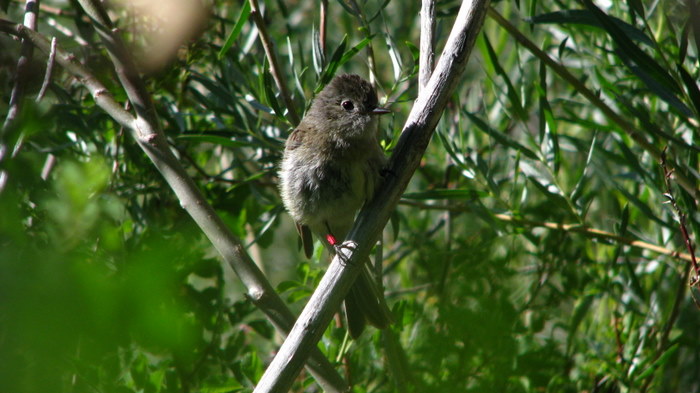
Observers: Chris McCreedy
Email: cmccreedy atprbodotorg
Date: 08/01/2008
Time: 08:22 PM -0400
Flycatchers that have been catching flies in the same place for the past 10 weeks are now catching them elsewhere - it's dispersion season. There are still a few nesting birds on Rush, but a great deal of my Willow and Dusky Flycatchers are moving around and heading out. I am grateful for all effort you may make in taking the time to try to see Empid legs. If one of you were to re-sight my birds, it will assist in our survivorship and migration knowledge. I band them with two metal bands, a federal, numbered band, and a metal band with two strips of colored enamel, giving it two colors. The numbered band will either be silver or anodized red, like a red house key. The colored band will be a combination of red, orange, yellow, green, blue, mauve, black, or white. Thus you'll see either color-color on the left or right, and silver or anodized red on the other leg. Combinations are read from body to toe and from the bird's left side to the bird's right side. I've included some pictures that show a bird with an anodized red band and a bird with the combination silver on the left and blue-black on the right. Brown-headed Cowbirds had a massive impact on the Dusky and Willow Flycatcher populations on Rush Creek this season. Parasitism of Dusky Flycatcher nests was over 70%, and over 50% for Willow Flycatcher nests. As always, I beg for everyone to forgo feeding birds in the spring and summer, and to do their best in communicating to your neighbors the effect that feeding cowbirds has in arid environments. I've also included a photograph of a Dusky Flycatcher nest with 3 cowbird eggs. They used to hardly get parasitized in years past, there are just too many cowbirds. Cowbirds could not survive in arid environments without subsidization from humans - through feeders, agriculture, grazing, campgrounds, and sod. In Lee Vining, we have little ag or grazing, many cowbirds are supported through people feeding them seed in the summer. We are eradicating the birds we love, simply to see Eurasian Collared-doves, House Finches, cowbirds, blackbirds, and House Sparrows at our feeders, while the birds most negatively affected by cowbirds derive zero benefit from feeding.


